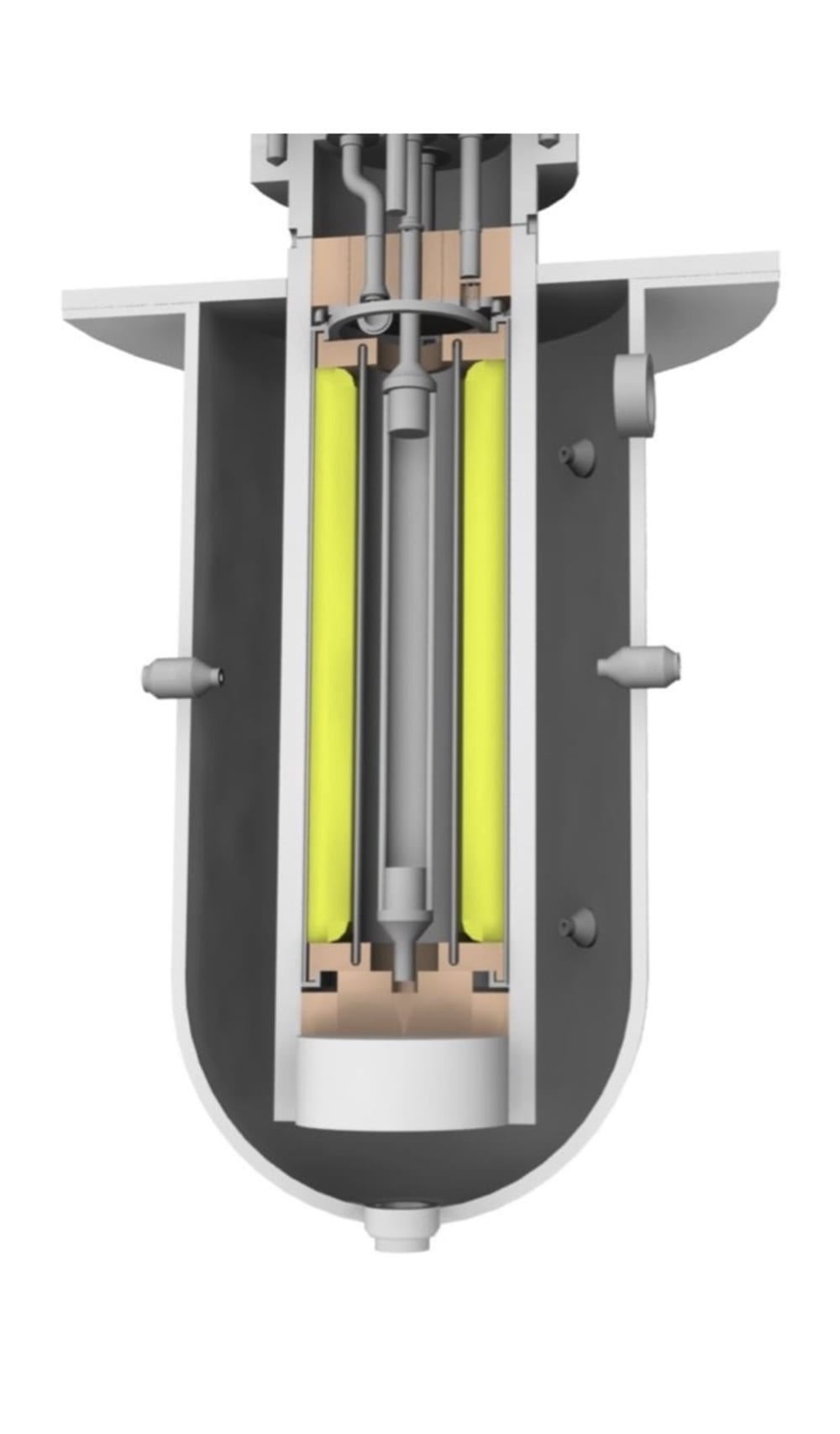A small group of scientists in Fairfax, Virginia has combined the best scientific principles from its study of cold fusion over the last 25 years into a unique design for the prototype cold fusion generator discussed below.
Innovation: The system’s reaction chamber and heat exchanger/boiler are key subsystems depicted in the enclosed illustration. This design is novel and presents the following important advances over the current state-of-the-art:
(a) utilizes pressurized hydrogen and deuterium gas and proton-deuteron (p-d) reactions that occur more easily in a cold fusion environment than other types of nuclear reactions.
(b) it is designed to produce 200 kilowatts (kW) of heat, which can be converted into mechanical horsepower sufficient to run an automobile or power homes in a community. Each p-d fusion will produce an atom of helium-3 and 5.5 MeV of energy from gamma radiation. About 2.3 x 1017 reactions per second will produce 200 kW.
(c) operates continually for longer periods than systems producing energy by transmutation or d-d fusion where their cathodes would be degraded more rapidly.
(d) gamma radiation energy is low enough to be absorbed and contained by the system’s physical components.
(e) energy produced by each p-d fusion reaction is greater than the energy which could be produced by averaging types of d-d fusion. Less deuterium will be needed.
(f) deuterium and hydrogen are provided in small, high pressure gas puffs that contain only a millionth of the quantity of gas ordinarily dealt with in conventional power systems.
(g) reactant gas (helium-3) is extracted and temporarily stored, enabling addition of deuterium/hydrogen gas for long period operation.
Manufacturability: All components and parts can be manufactured using standard production methods. Successful manufacturing of a prototype cathode, anode, reaction chamber and helium measurement system has been demonstrated. The prototype cathode is made by high-pressure, metal powder consolidation. The reaction chamber is designed to contain high gas pressure and temperature during operation and also to be opened and closed for maintenance. The heat exchanger/boiler contains spray nozzles to provide quick response to changes in reaction chamber surface temperature and to remove heat from the system. The design includes four gas source and collection manifolds and a sophisticated electronic subsystem to monitor and control system operation discussed on the team’s website, www.greentechtalk.com . Further implementation will require an Advanced Development Program that includes complete testing of these and all other components.
Marketability: This system was designed to bridge the gap between laboratory research systems and a commercially useful cold fusion device, and to ensure it can be manufactured and supported by industry. This design has a practical application as the prime power source in community-based power plants, and would be used along with solar, wind and geothermal power as alternative energy solutions to hydrocarbon fuel. Due to climate change, this innovation is urgent for homeowners, communities, and national governments.
Like this entry?
-
About the Entrant
- Name:Randolph Davis
- Type of entry:teamTeam members:Dr. Ernie Alcarez, Dr. Monte Chawla, Roy Collette, Randolph Davis, Dr. Austin Lowrey, Dr. Fred Sandel, and Don Waltman.
- Patent status:pending

